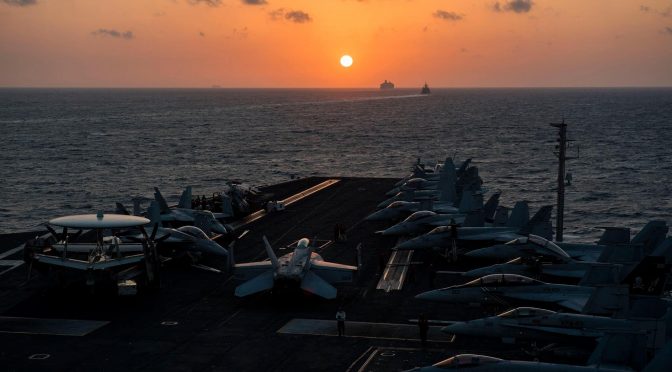By Richard Mosier
The Soviet Union was officially dissolved on December 26, 1991, leaving the U.S. Navy with no near-peer maritime threat for the past 25 years. The current generation of naval officers has grown up in an environment in which the U.S. Navy has been focused on strike operations in a relatively benign, third-world threat environment. In that environment, the surface navy has focused overwhelmingly on fleet defense and net-centric operations, with little need to grapple with concepts for the offense against a maritime near-peer.
Multiple nations now pose threats that require new consideration of offensive concepts such as distributed lethality. The U.S. Navy now faces the challenge of relearning lessons learned in the 1970s and 1980s when faced with the threat of the Soviet Navy. Offensive naval operations against a near-peer, then, now, and in the future will have to give the offense and the defense equal emphasis. The offense emphasizes the element of surprise that is achieved through deception, counter- surveillance, and counter-targeting tactics. The fleet will have to relearn how to operate in EMCON, with all task force RF emitters in standby, and still maintain the tactical advantage of superior situational awareness.
In the past 25 years, national, theater, and Navy intelligence, surveillance, and targeting capabilities have dramatically improved in surveillance area coverage, near real-time contact reporting, and shore-based all-source correlation and fusion. The challenge is to leverage the impressive capabilities of off board systems to achieve situational awareness when an offensive task force is transiting in EMCON. This will require some sacrifice of jealously guarded institutional equities. It also will require the Navy develop and field shipboard capabilities for the integration of this near real-time, off-board, and force sensor information on surface combatants such as DDGs to realize the potential for superior situation awareness and from that, win tactical decisions. It will require the Navy recognize Information Operations Warfare as a warfare area that requires OPNAV sponsorship and the development of warfare specialists and supporting systems that are essential for the planning and execution of deception, counter-surveillance, and counter-targeting operations that enable offensive mission success.
Richard Mosier is a former naval aviator, intelligence analyst at ONI, OSD/DIA SES 4, and systems engineer specializing in Information Warfare.
Featured Image: RED SEA (Dec. 17, 2015) Aircraft carrier USS Harry S. Truman (CVN 75) transits the Strait of Bab el-Mandeb. Guided-missile destroyers USS Ramage (DDG 61), front, and USS Gonzalez (DDG 66) transits the Strait of Bab el-Mandeb. Guided-missile destroyer USS Bulkeley (DDG 84) transits the Strait of Bab el-Mandeb. (U.S. Navy photo by Mass Communication Specialist 3rd Class J. R. Pacheco/Released)

